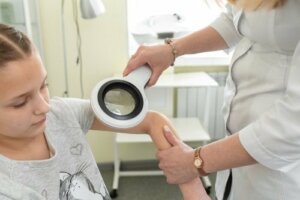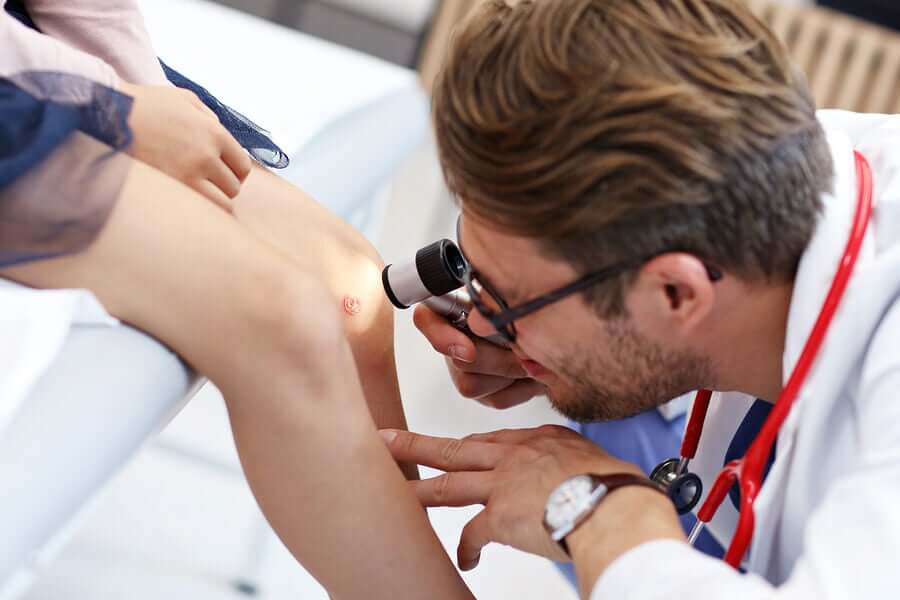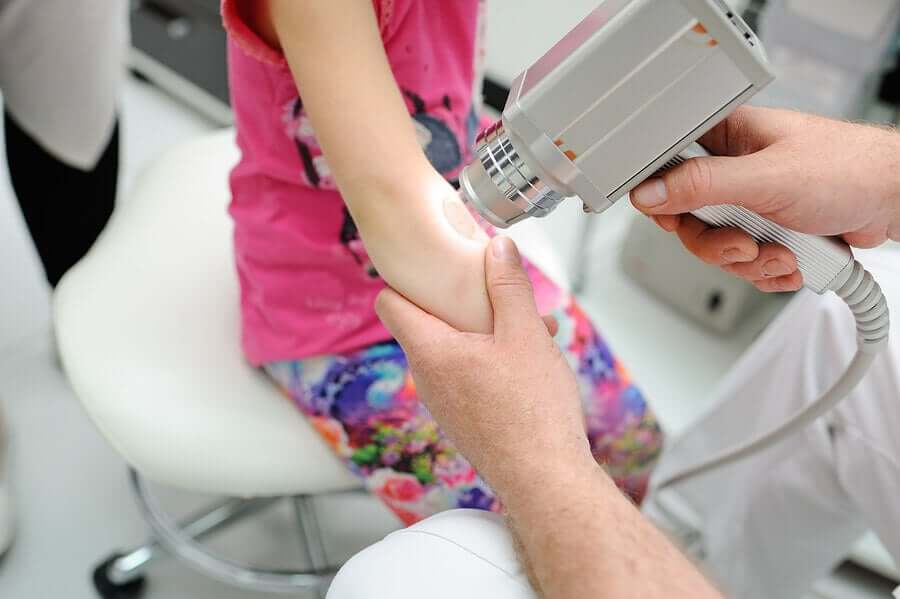Laser in Pediatric Dermatology: How Does It Work?

Today, lasers are used in pediatric dermatology and in a wide variety of other fields. A laser is a device that emits a very powerful beam of light. This device concentrates the light into a narrow beam through which the light can be emitted very effectively. We’ll tell you more about this below.
How does a laser work?
A laser device uses an effect of quantum mechanics to generate a beam of light with controlled size, shape and direction.
Generally, light rays, just when they come from the sun, travel radially from their source, and decrease with distance. However, a laser is a light source that travels in a parallel movement, and its energy hardly decreases with distance.
The fundamental difference between a laser and pulsed light (IPL) is the type of light. Pulsed light (IPL) consists of a broadband pulsed light source, while the laser is a monochromatic coherent light source.
Laser in pediatric dermatology allows experts to concentrate a large amount of energy on one point instead of on the surrounding skin. For this reason, professional lasers offer fast results.
The use of laser in pediatric dermatology

One of the most important tools for the treatment of dermatological conditions in pediatrics is the use of laser to promote healing. This improves both the appearance and the symptoms.
The use of laser in pediatric dermatology reduces the abnormal excess of blood vessels that form red scars. It also achieves this effect on birthmarks under the surface of the skin, resulting in a decrease in the reddish appearance.
Also read: Corrective Makeup in Dermatology
CO2 laser
Currently, the ablative and fractional laser, also known as carbon dioxide or CO2 laser, allows specialists to locate the thick, fibrous collagen of contracted and hypertrophic scars.
This is accomplished by creating thousands of tiny holes in the surface and material of the scar while leaving adjacent areas untouched. The ablative and fractional laser is used to treat different characteristics of hypertrophic scars.
This softens, thins, and gives elasticity to the scar tissue. In different configurations, small focal lesions of the epidermis and dermis can make the surface more uniform and correct pigmentation abnormalities.
Results have shown a profound improvement in the quality and appearance of skin grafts. The same goes for scars after a burn injury.
Discover: How to Care for Scars During the Summer
Advantages of laser treatment in pediatric dermatology

One of the most significant advantages of laser treatment in pediatric dermatology is its simplicity. Patients receive laser treatment for scars on an outpatient basis, and this allows the treatment to be continuous without interfering with the child’s school work or social life.
This avoids or decreases hospitalization. It also minimizes surgical damage, bleeding, and prevents or decreases pain after surgery. In addition, it speeds up the healing process.
Prevents scar formation
Scars are a natural and essential part of the healing process. While recovering the integrity of the skin, they can cause symptoms and are often unsightly once the wound is closed.
Scars, including keloids, arise after burns, cuts, and surgery, but also as a result of conditions such as acne. When a wound closes, a visible scar emerges.
This is because scar tissue, unlike natural skin tissue, doesn’t regenerate all the components of normal skin and therefore looks different.
When a child suffers severe burns, the epidermis and dermis of normal skin are destroyed. The wound closes by producing fibrous collagen which leads to the formation of scars.
In conclusion
Lasers in pediatric dermatology are a key tool to promote healing in case of dermatological conditions or injuries. Not only does it improve their appearance, but it also helps calm the symptoms if there are any.
All cited sources were thoroughly reviewed by our team to ensure their quality, reliability, currency, and validity. The bibliography of this article was considered reliable and of academic or scientific accuracy.
- Gianfaldoni S, Tchernev G, Wollina U, et al. An Overview of Laser in Dermatology: The Past, the Present and … the Future (?). Open Access Maced J Med Sci. 2017;5(4):526–530. Published 2017 Jul 23. doi:10.3889/oamjms.2017.130
- Omi T, Numano K. The Role of the CO2 Laser and Fractional CO2 Laser in Dermatology. Laser Ther. 2014;23(1):49–60. doi:10.5978/islsm.14-RE-01
- Klank, H., Kutter, J. P., & Geschke, O. (2002). CO2-laser micromachining and back-end processing for rapid production of PMMA-based microfluidic systems. Lab on a Chip. https://doi.org/10.1039/b206409j
- Bencini, P. L., Tourlaki, A., De Giorgi, V., & Galimberti, M. (2012). Laser use for cutaneous vascular alterations of cosmetic interest. Dermatologic Therapy. https://doi.org/10.1111/j.1529-8019.2012.01463.x
- J.W., Z., L., Z., Q., Z., H.M., M., Y.A., W., X.D., F., … X.K., W. (2013). A practical guide to treatment of infantile hemangiomas of the head and neck. International Journal of Clinical and Experimental Medicine.
This text is provided for informational purposes only and does not replace consultation with a professional. If in doubt, consult your specialist.








